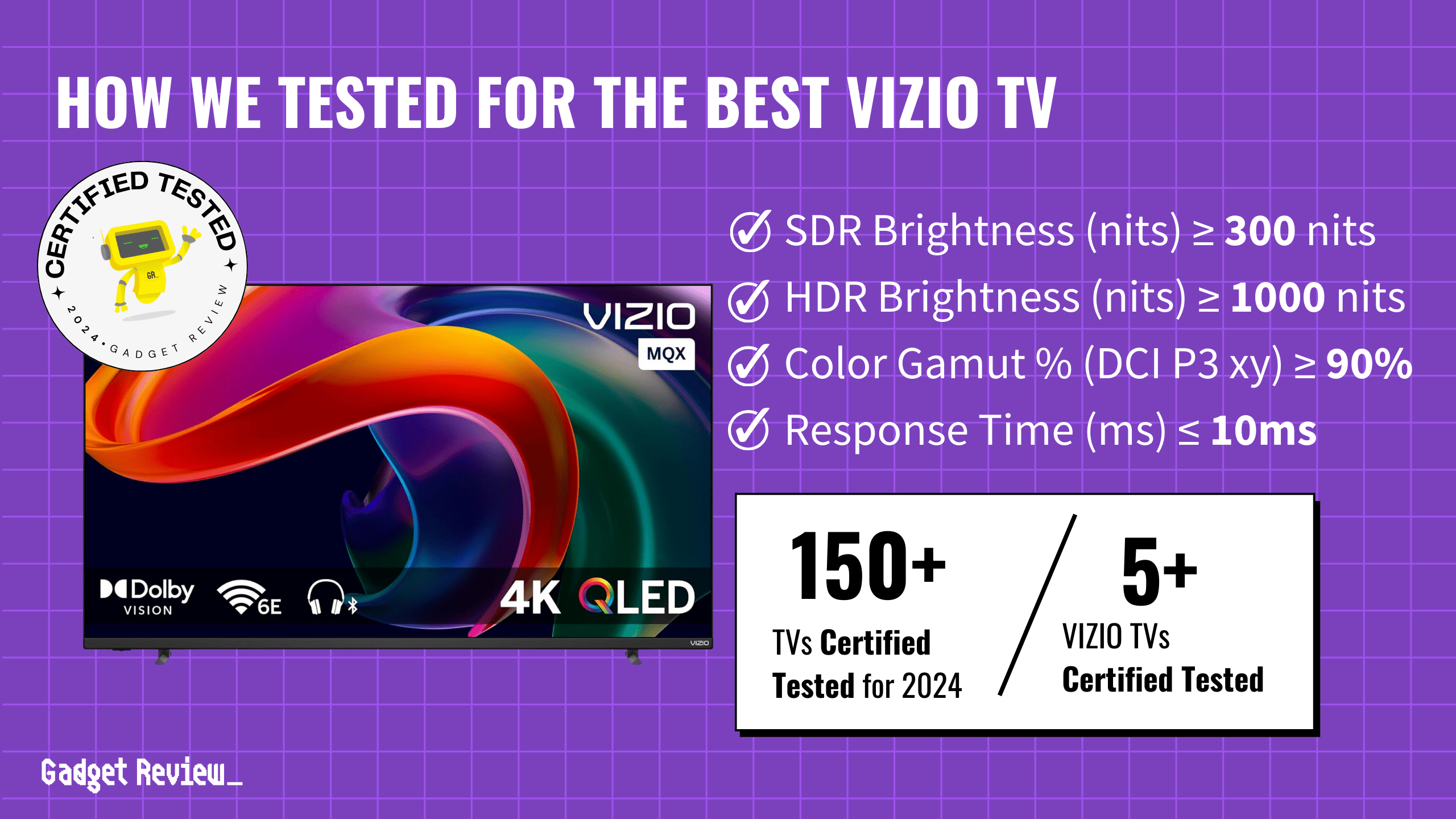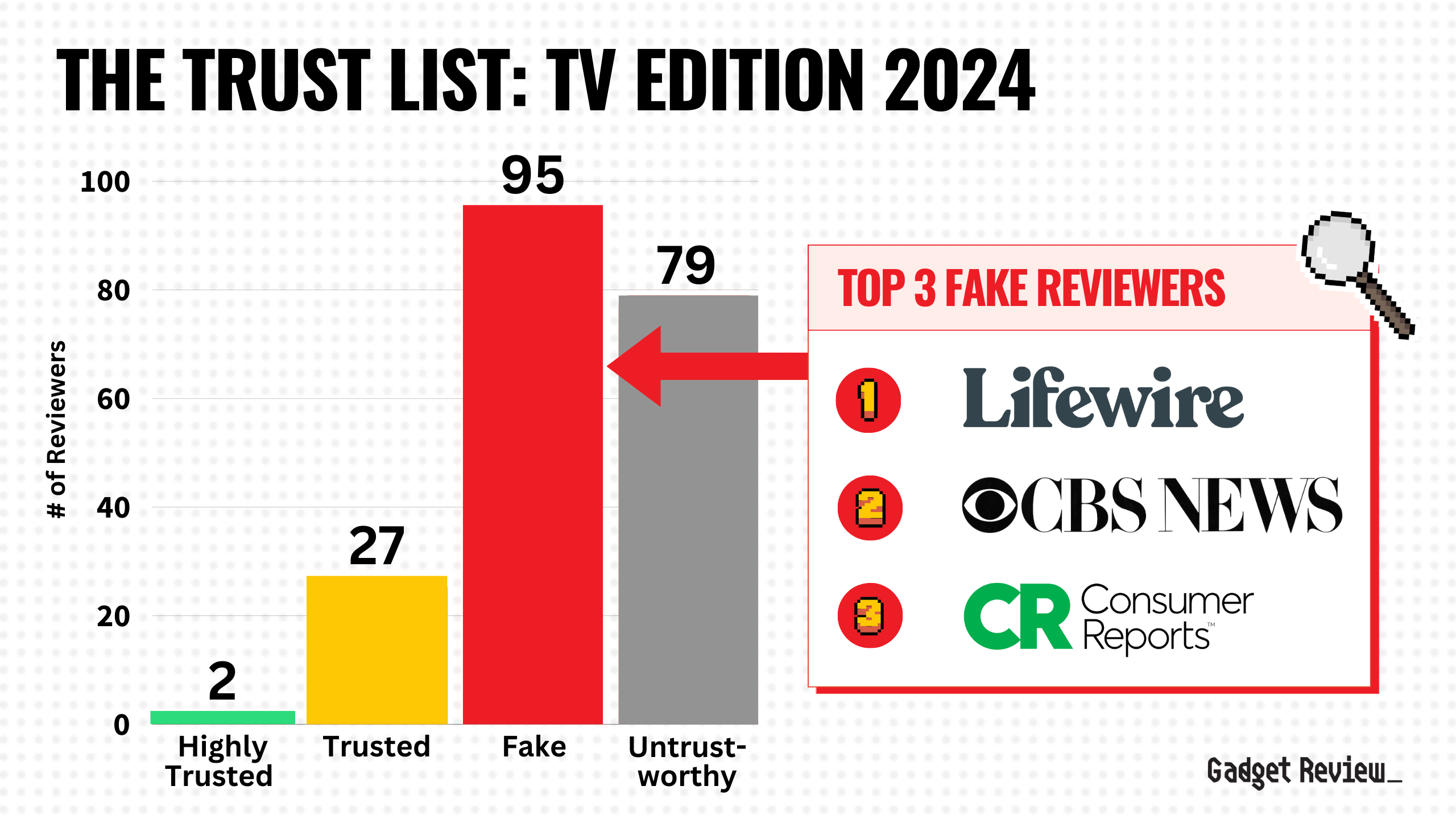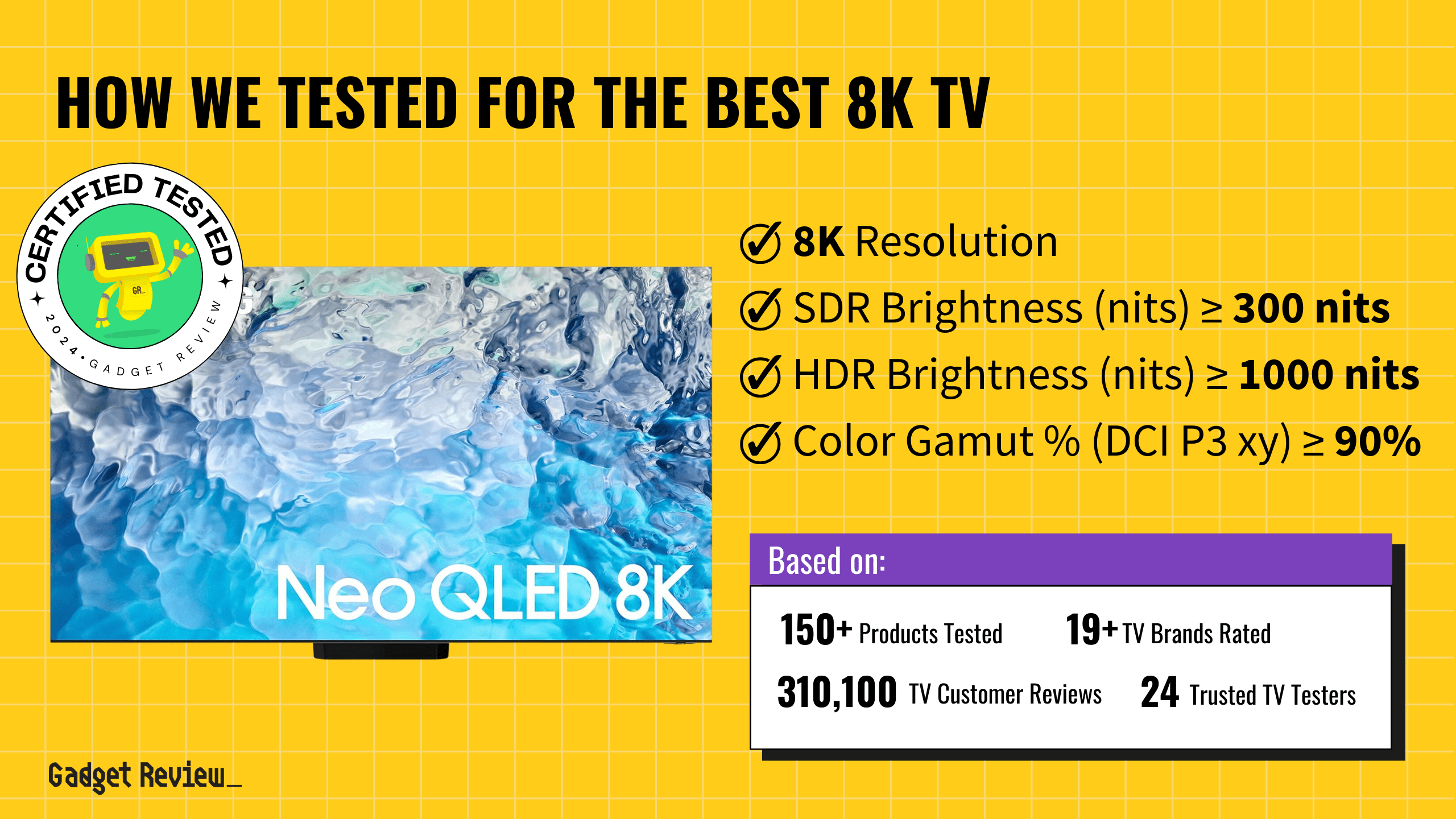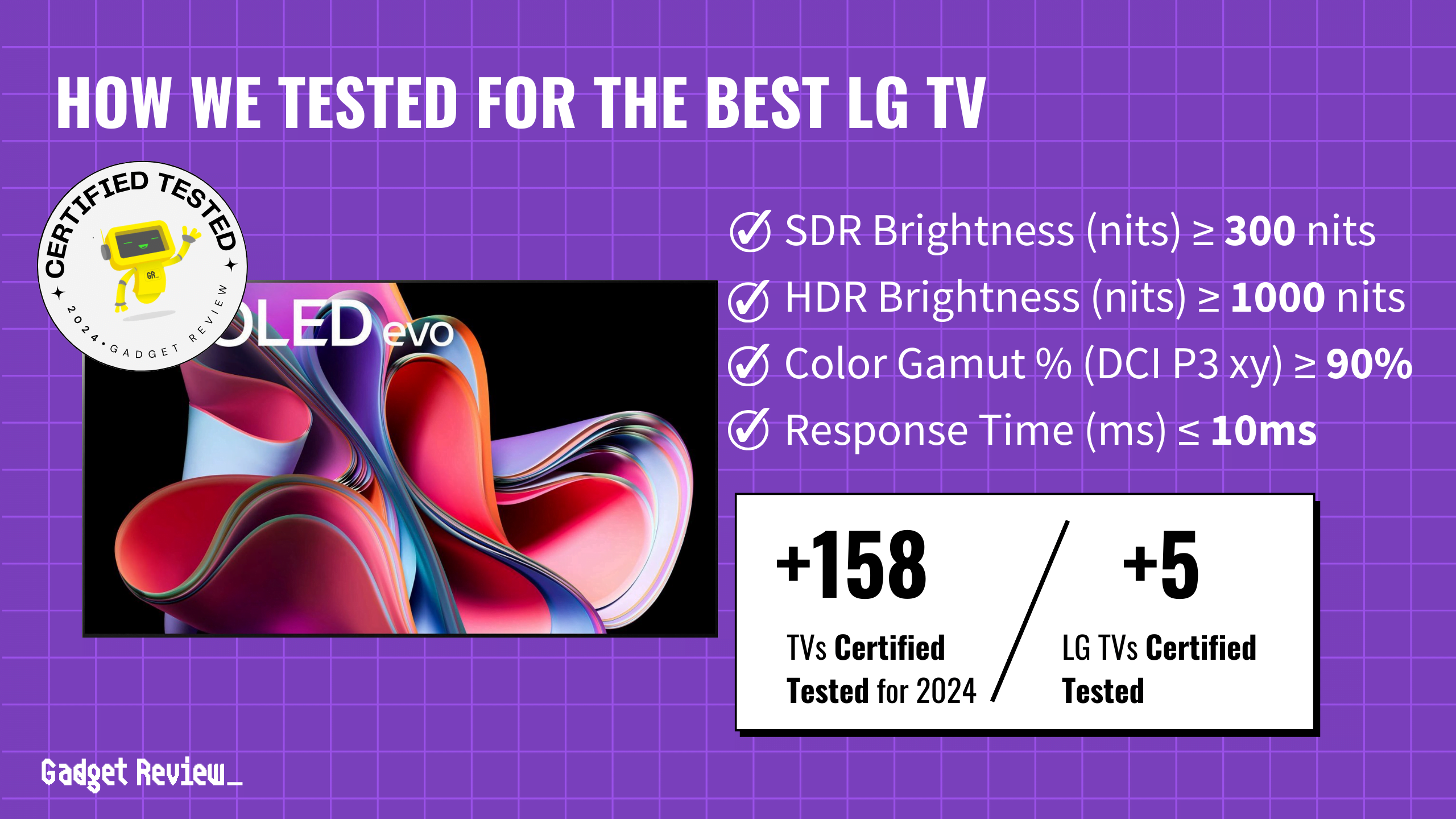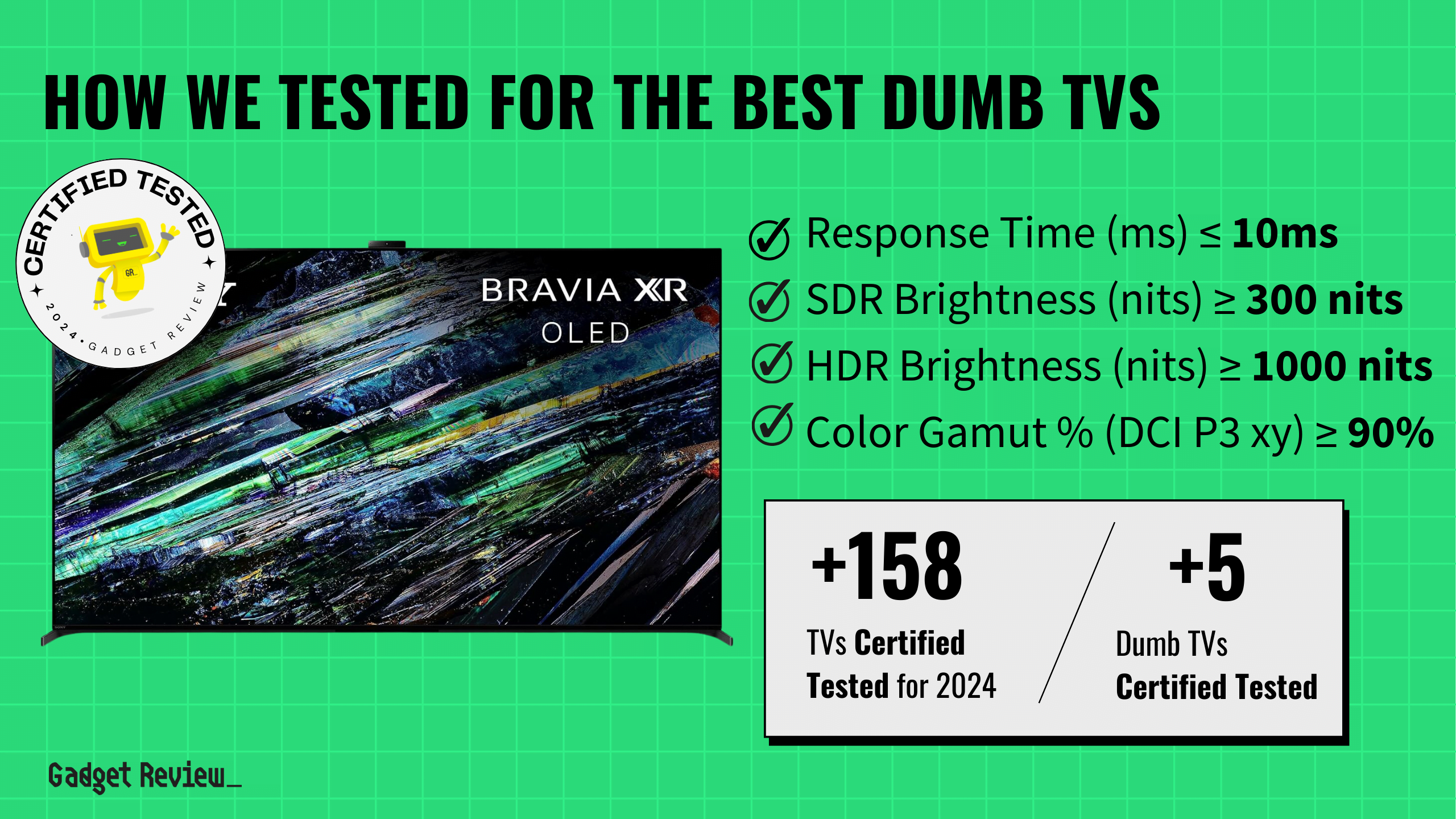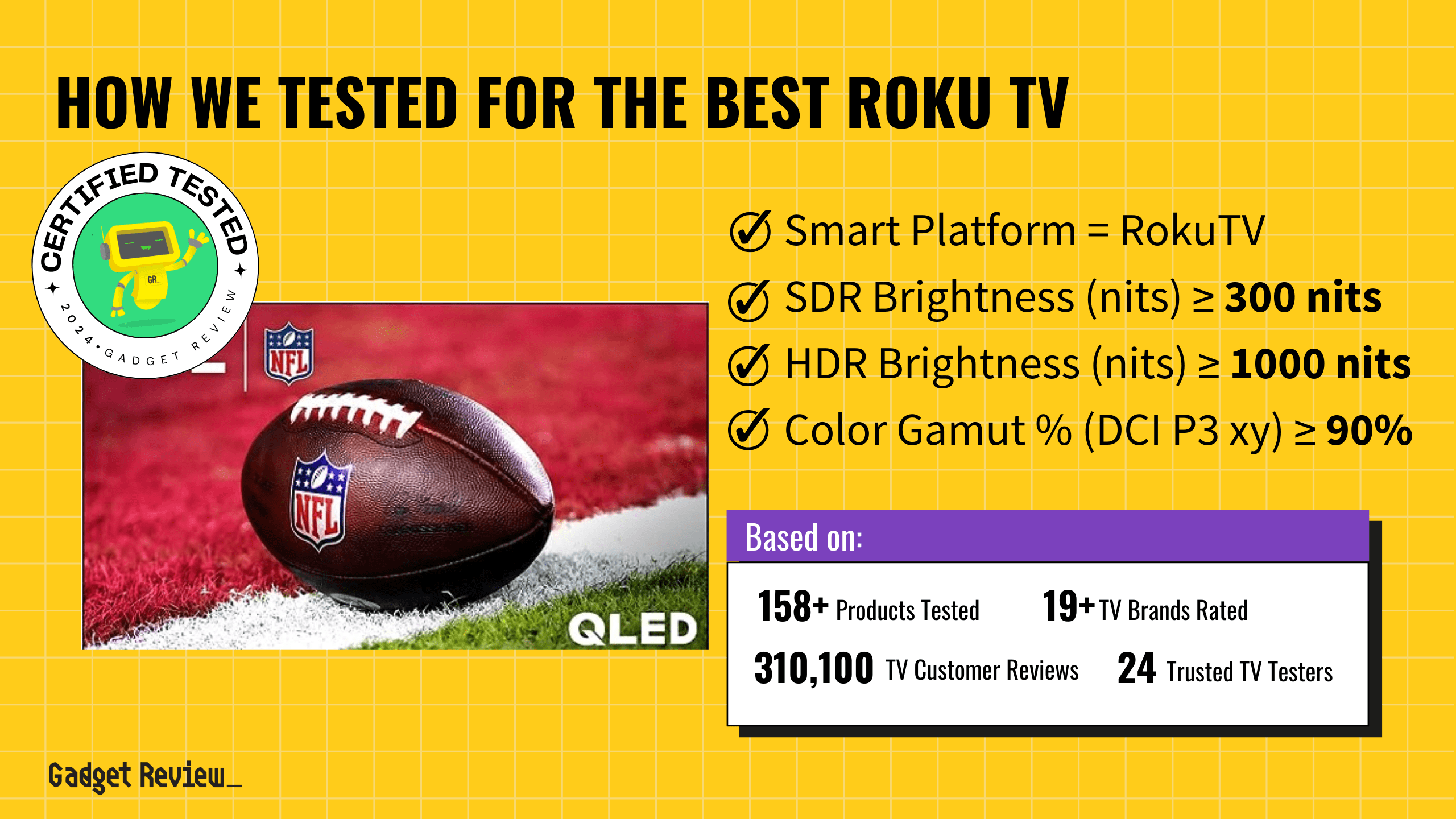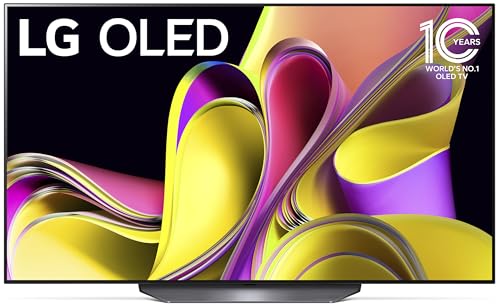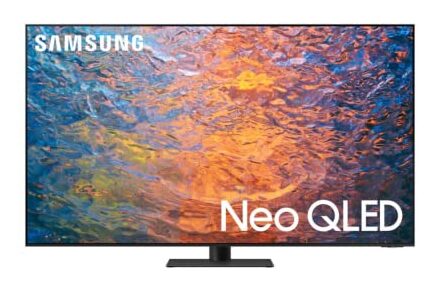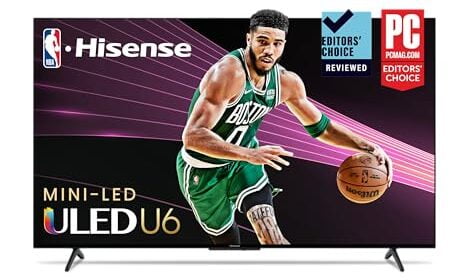The best Vizio TVs combine affordability with reliable performance, making them a worthy choice for those dedicated to the brand. Although TCL and Hisense may have the upper hand in certain aspects, our rankings, based on extensive test data and our True Score system, spotlight the Vizio models that stand out. When searching for the best TV, it’s crucial to consider a blend of performance, price, and longevity, areas where Vizio consistently delivers.
If Vizio is your brand of choice, our guide ensures you access top-tier options that don’t skimp on quality or features, matching your budget and viewing preferences seamlessly.
How Did We Rank the Best Vizio TVs?
To assess how high or low quality a Vizio TV actually is one must evaluate specific testing criteria against reference industry standards. Using our thorough TV Testing Methodology, we determined there are 6 criteria below (3 required, 3 nice to have) that ensure your content looks as good as the creator intended it.
? Test Criteria
- SDR Brightness: Should meet or exceed 300 nits for optimal clarity and brightness in standard dynamic range content.
- HDR Brightness: A minimum of 1000 nits to fully realize the depth and detail of high dynamic range content.
- Color Gamut: Achieve at least 90% coverage of the DCI P3 color space for accurate and vibrant colors.
? “Nice To Haves”
- Contrast Ratio: Ideally surpassing 10,000:1 to deliver striking contrast between dark and bright areas.
- EOTF Accuracy: Aim for an EOTF (Electro-Optical Transfer Function) delta of 0.018 or lower for precise brightness and contrast reproduction.
- Response Time: Ideally 10ms or faster to ensure minimal motion blur and smooth transitions in fast-paced scenes.
We’ve redefined TV buying guides, setting us apart from any other site on the planet. Our unique approach combines in-house verification with a comprehensive dataset from over 200+ trusted sites, focusing on key testing metrics to rank the top rated Vizio TVs. Testing data and specs include brightness exceeding 300 nits for SDR content and 1000 nits for HDR, along with Color Gamut coverage of at least 90% DCI P3. In this case it’s for Vizio TVs, ensuring optimal performance in various lighting conditions and space constraints. Discover our data-driven methodology for precise, reliable TV recommendations. Our commitment to unbiased reviews is powered by our ‘True Score’ system, targeting low quality and fake reviews. Commissions fund this mission. No bias. No BS.
Latest Updates
- 03/11/2024: Completely and thoroughly overhauled the guide to include the best and latest Vizio TVs.
- 11/30/2023: Republished the list to include TVs based on our True Score system.
Top Vizio TVs For 2024
Prices accurate at the time of publishing
To earn a place on our list, a Vizio TV must have good SDR and HDR brightness as well as great coverage of the DCI P3 color space. If it doesn’t meet these criteria, it won’t make the cut!

Best Overall

Runner Up

Best Value

Best Budget

Best Mid-Range

Premium Pick
Vizio M-Series (MQ6) LED TV
The MQ6 excels in color accuracy and HDR in dim settings but struggles with brightness and contrast in brighter spaces and fast-paced content.
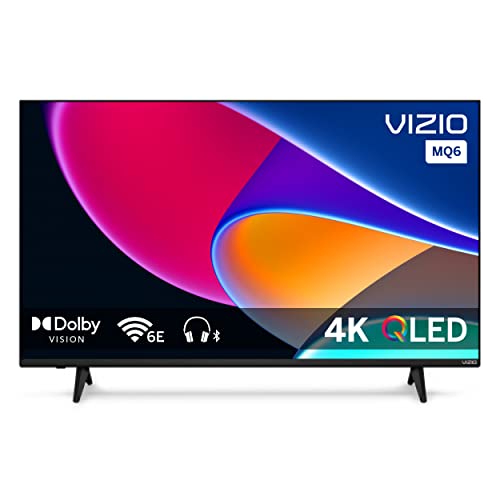
True Score
82794Experts
882kCustomers
Absolutely Fresh
 SAVE $52$349.99$298.00
SAVE $52$349.99$298.00Snapshot
Reasons to Buy
- Good color accuracy
- Decent audio quality
- Decent response time
- Supports Google Cast and Apple AirPlay
Reasons to Avoid
- Contrast is unexceptional
- Substandard HDR performance
- Unremarkable brightness
- App selection is mediocre
Specifications
Max Resolution 3840 x 2160 (4k) 
Backlight Type Direct Lit Refresh Rate 60 Hz Display Type LED HDMI Inputs 3 HDR Format Yes 
LED Panel Type QLED Screen size 55″ 
Smart Platform SmartCast 
Sync Technology n/a 
VRR n/a All Specs
Test Results
SDR Brightness (nits) 255 HDR Brightness (nits) 246 Color Gamut % (DCI P3 xy) 93.16 Response Time (ms) 13.6 Contrast Ratio (x:1) 8,516 EOTF (600 nit delta) 0.0085 Color Gamut % (DCI P3 uv) 95.63 Color Gamut % (Rec 2020 xy) 76.86 Color Gamut % (Rec 2020 uv) 77.69 Color Gamut % (sRGB) 0 Color Gamut % (Rec 709) 99.96 Color Gamut % (BT.2020) 0 Color Gamut % (Adobe RGB) 0 Color Gamut % (BT.709) 0 Input Lag (ms) 13 Color Washout (Degrees) 21 Color Shift (Degrees) 32 Brightness Loss (Degrees) 29 Reflections (%) 5.3 Low-Freq Extension (Hz) 119.87 Freq Response StdDev @ 70db 3.27 Freq Response StdDev @ 80db 3.24 Weighted Total Harmonic Distortion @80db 0.16 Intermodulation Distortion @80db 5.26 EOTF (1000 nit delta) 0.0085 EOTF (4000 nit delta) 0.0085 All Tests
All Retailers
- $298.00$350Save $52
Availability
In StockFree Shipping
Yes
Our Verdict
The Vizio M-Series MQ6 focuses on bringing value in smaller, dimmer rooms. With a color gamut coverage of 93.16%, it nearly mirrors its higher-end counterparts, ensuring that viewers are treated to a wide spectrum of colors that enhance the overall viewing experience. Given the low price of the MQ6, this coverage is impressive. Between this coverage and the excellent EOTF of 0.0085, the MQ6 is a good option for all kinds of HDR and home theater content in darker rooms, but the 8516:1 contrast ratio is a bit of a letdown and will keep dynamic scenes from achieving truly deep and rich blacks.
If you’re looking to put it in a bright room, the MQ6 just isn’t suited for overcoming sunlight. With an SDR brightness of 255 nits and HDR brightness at 246 nits, the MQ6 is meant for dim and moderately lit places, like a bedroom or dark game room. The reflection rate of 5.3% means that the TV is also going to struggle with glare if you decide to try and put it in a bright space.
The input lag of 13.0 ms is respectable, catering well to casual gaming needs, though hardcore gamers might seek out models with quicker response times. Similarly, the 13.6 ms response time is good enough for keeping action clear enough when watching sports or action movies, but it’s still on the higher end of TVs in general.
If you’re prioritizing color accuracy and cost-effectiveness, the MQ6 will get you a decently sized TV at a great price. For the home theater enthusiast on a budget, if you can swallow the less than great contrast ratio, it’s the way to go. If you’re in need of brightness or highly responsive panels, however, the MQ6 is going to struggle more than other options on our list would, though you’ll also need to pay more.
Category Snapshot
TVs
- Total Brands/Products Tested
17 Brands, 158 Products
- Top 2 Brands
LG, Hisense
- Price Range (Budget-Premium)
$400-$2000
- Average True Score
76.65
- Important Test Criteria
Brightness (cd/m2)
Contrast Ratio (1000:1) - Most Trusted Testers

- Top TV Experts
- Recommended Retailer

- Typical Warranty
1 year
- Covered by Insurance
Yes – AKKO
- Test Methodology

Best Overall

Runner Up

Best Value

Best Budget

Best Mid-Range

Premium Pick
Vizio D Series
Basic 1080p TV with decent contrast; suitable for dim rooms and straightforward viewing needs, lacking in HDR and gaming performance.
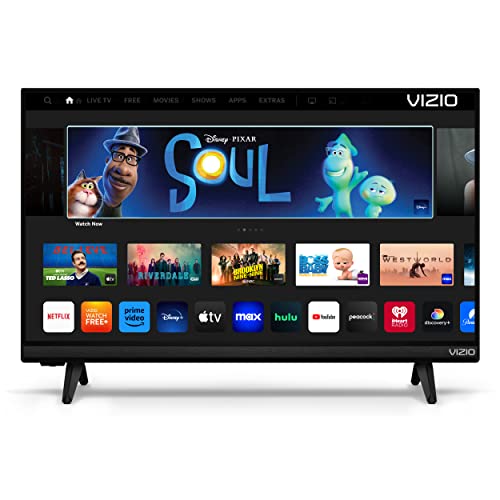
True Score
79775Experts
8542kCustomers
Mixed Reviews
 SAVE $12$118.00$106.00
SAVE $12$118.00$106.00Snapshot
Reasons to Buy
- Wide Viewing Angles
- Chromecast Compatible
- Good Response Time
Reasons to Avoid
- Mediocre Picture Quality
- Bad Motion Handling
- Two HDMI Ports
- Limited Color Gamut
Specifications
Max Resolution 1920 x 1080 (Full HD) 
Backlight Type Direct Lit Refresh Rate 60 Hz Display Type LED HDMI Inputs 2 HDR Format n/a 
LED Panel Type LED Screen size 24″, 32″, 40″ 
Smart Platform SmartCast 
Sync Technology n/a 
VRR n/a All Specs
Test Results
SDR Brightness (nits) 209 HDR Brightness (nits) 0 Color Gamut % (DCI P3 xy) 72.87 Response Time (ms) 16.5 Contrast Ratio (x:1) 7,692 EOTF (600 nit delta) 0 Color Gamut % (DCI P3 uv) 79.52 Color Gamut % (Rec 2020 xy) 52.6 Color Gamut % (Rec 2020 uv) 59.04 Color Gamut % (sRGB) 0 Color Gamut % (Rec 709) 96.66 Color Gamut % (BT.2020) 0 Color Gamut % (Adobe RGB) 0 Color Gamut % (BT.709) 0 Input Lag (ms) 25.7 Color Washout (Degrees) 21 Color Shift (Degrees) 18 Brightness Loss (Degrees) 28 Reflections (%) 4.9 Low-Freq Extension (Hz) 151.02 Freq Response StdDev @ 70db 2.12 Freq Response StdDev @ 80db 2.53 Weighted Total Harmonic Distortion @80db 0.975 Intermodulation Distortion @80db 3.58 EOTF (1000 nit delta) 0 EOTF (4000 nit delta) 0 All Tests
All Retailers
- $106.00$118Save $12
Availability
In StockFree Shipping
Yes - $118.00$160Save $42
Availability
In StockFree Shipping
Yes
Our Verdict
If all you need is an entry-level TV, the Vizio D Series targets anyone seeking affordability without the frills of higher-end models. With its focus on basic functionality, the D Series is a 1080p TV in a market dominated by 4K displays. This resolution is sufficient for viewers who prioritize straightforward television use, such as watching standard-definition cable TV, streaming non-4K content, or for use as a secondary screen.
The SDR brightness of 245 nits put the Vizio D series towards the very bottom of overall performance when it comes to brightness, meaning the set is primarily meant for use in dimly lit rooms. With a reflection rate of 4.9%, strategic placement away from direct light sources is necessary to avoid ruining the picture quality.
If you just need a TV that works, the limited color gamut coverage of 72.87% will be a compromise you’ll need to make. The limited coverage is meant primarily for casual cable TV or simple YouTube videos. The contrast ratio of 7692:1 is decent, and even higher than some of the higher priced Vizio’s on our list. However, with no support for HDR and a limited resolution, it’s purely a nice bonus.
The TV’s input lag of 25.7 ms is acceptable only for casual gaming, and the 60 Hz refresh rate means the TV can’t support the increased fidelity of modern game consoles. The 16.5 ms response time, however, is good enough for everyday TV watching and can deliver sports content without much blur.
The Vizio D Series is a no-frills television experience at a rock-bottom price. Its 1080p resolution and lack of HDR support cater to users with straightforward viewing requirements, making it a solid choice for secondary TVs or for those stepping into the digital viewing space. Its strengths lie in its contrast ratio and affordability, offering a competent viewing experience where advanced features are not essential. For budget-conscious consumers or those with specific non-4K content needs, the D Series represents a practical and accessible option.

Best Overall

Runner Up

Best Value

Best Budget

Best Mid-Range

Premium Pick
Vizio M Series Quauntum X TV
Offers decent contrast and vibrant colors for its price; best for dim to moderately lit rooms with average gaming responsiveness.
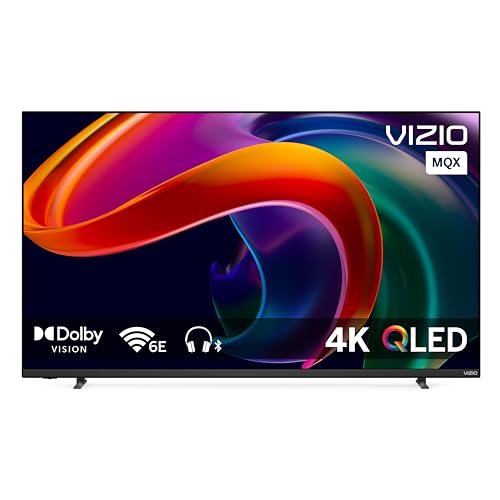
True Score
79776Experts
84872Customers
Mixed Reviews
 SAVE $203$629.99$426.99
SAVE $203$629.99$426.99Snapshot
Reasons to Buy
- Above-average 800-nit peak brightness for its price point
- HDMI 2.1 inputs and Wi-Fi 6E for fast streaming
- Convenient, easy-to-use remote control
- Variable refresh rate support with 120Hz native refresh rate
Reasons to Avoid
- Not as bright as some competitors using mini LED technology
- Just 30 local dimming zones, rather than the 700+ on more expensive LED TVs
- Narrow viewing angles, with color washout beginning at 30 degrees
- Mediocre gray uniformity, with a 4% deviation
- Some blooming in darker scenes
Specifications
Max Resolution 3840 x 2160 (4k) 
Backlight Type Full-Array Refresh Rate 120 Hz Display Type LED HDMI Inputs 4 HDR Format Dolby Vision, HDR10, HDR10+, HLG 
LED Panel Type QLED Screen size 50″, 65″, 75″ 
Smart Platform SmartCast 
Sync Technology AMD FreeSync Premium Pro, G-Sync 
VRR Yes All Specs
Test Results
SDR Brightness (nits) 749 HDR Brightness (nits) 770 Color Gamut % (DCI P3 xy) 93.705 Response Time (ms) 11.3 Contrast Ratio (x:1) 19,265 EOTF (600 nit delta) 0.0176 Color Gamut % (DCI P3 uv) 95.7 Color Gamut % (Rec 2020 xy) 74.36 Color Gamut % (Rec 2020 uv) 82.7 Color Gamut % (sRGB) 0 Color Gamut % (Rec 709) 99.91 Color Gamut % (BT.2020) 0 Color Gamut % (Adobe RGB) 0 Color Gamut % (BT.709) 0 Input Lag (ms) 12.4 Color Washout (Degrees) 23 Color Shift (Degrees) 19 Brightness Loss (Degrees) 29 Reflections (%) 5.7 Low-Freq Extension (Hz) 119.87 Freq Response StdDev @ 70db 3.03 Freq Response StdDev @ 80db 2.98 Weighted Total Harmonic Distortion @80db 0.114 Intermodulation Distortion @80db 4.1 EOTF (1000 nit delta) 0.0176 EOTF (4000 nit delta) 0.0176 All Tests
All Retailers
- $426.99$630Save $203
Availability
In StockFree Shipping
Yes - $428.00$1,341Save $913
Availability
In StockFree Shipping
Yes
Our Verdict
The Vizio M Series Quantum X TV offers solid performance for its price range, especially notable for its contrast ratio and color accuracy. With a contrast ratio of 19265:1, it provides decent blacks that enhance viewing in dimly lit environments, making it suitable for movie nights. The color gamut coverage at 93.71% is good, and ensures that the colors are vibrant and true to life. Its EOTF of 0.0176 puts it just past the bar our minimums set, so the TV can do a good job of accurately tracking gamma, especially at this price point.
With an SDR brightness of 749 nits and HDR brightness peaking at 770 nits, the Quantum X performs best in dim to moderately lit rooms. While these numbers might not cut through the glare in very bright environments, they are sufficient for most home settings, providing clear and visible imagery without the need for a darkened room. The television’s reflection rate of 5.7% aids is good enough for dimmer and moderately lit rooms, but you should keep it out of very bright places.
If you’re a gamer, the input lag of 12.4 ms and a response time of 11.3 ms mean the TV is responsive enough for casual gaming, but if you’re looking for every competitive edge you can get, the M7 is a better choice, though not by much. Very budget TVs, which are Vizio’s specialty, are going to make compromises somewhere, and the compromises the Quantum X makes fall on responsiveness.
In summary, the Vizio M Series Quantum X TV is a strong option within the budget category, offering features that are typically associated with more expensive models. Its strengths in contrast and color accuracy make it a compelling choice for users seeking quality without the premium price tag. However, its performance in brightly lit environments and for high-end gaming might not meet the expectations set by the highest standards in the market. This TV is best suited for viewers with controlled lighting conditions, looking for a balance between cost and quality.

Best Overall

Runner Up

Best Value

Best Budget

Best Mid-Range

Premium Pick
Vizio M7 Series Quantum
Best color accuracy in its class with responsive gaming performance, but the M7 has compromised contrast and moderate brightness that limits its versatility.
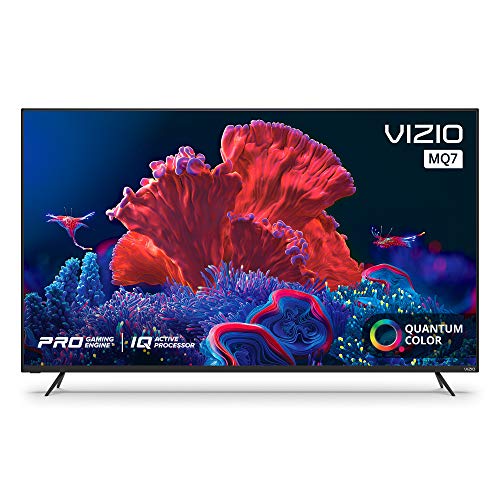
True Score
79781Experts
832kCustomers
Mixed Reviews
 SAVE $519$1,266.52$748.00
SAVE $519$1,266.52$748.00Snapshot
Reasons to Buy
- Excellent color accuracy
- Fantastic color gamut performance
- Low input lag
- Overall good picture quality
- Support for VRR (Variable Refresh Rate)
- Pleasing contrast ratio
Reasons to Avoid
- Narrow viewing angles
- Crude remote control
- Screen isn’t that bright
Specifications
Max Resolution 3840 x 2160 (4k) 
Backlight Type Full-Array Refresh Rate 60 Hz Display Type LED HDMI Inputs 4 HDR Format n/a 
LED Panel Type VA Screen size 55″ 
Smart Platform SmartCast 
Sync Technology n/a 
VRR n/a All Specs
Test Results
SDR Brightness (nits) 469 HDR Brightness (nits) 436 Color Gamut % (DCI P3 xy) 99.18 Response Time (ms) 12 Contrast Ratio (x:1) 5,053 EOTF (600 nit delta) 0 Color Gamut % (DCI P3 uv) 99.32 Color Gamut % (Rec 2020 xy) 81.03 Color Gamut % (Rec 2020 uv) 86.18 Color Gamut % (sRGB) 0 Color Gamut % (Rec 709) 0 Color Gamut % (BT.2020) 0 Color Gamut % (Adobe RGB) 0 Color Gamut % (BT.709) 0 Input Lag (ms) 10.3 Color Washout (Degrees) 21 Color Shift (Degrees) 21 Brightness Loss (Degrees) 28 Reflections (%) 4.7 Low-Freq Extension (Hz) 134.54 Freq Response StdDev @ 70db 3.61 Freq Response StdDev @ 80db 3.95 Weighted Total Harmonic Distortion @80db 0.336 Intermodulation Distortion @80db 3.03 EOTF (1000 nit delta) 0 EOTF (4000 nit delta) 0 All Tests
All Retailers
- $748.00$1,267Save $519
Availability
Not availableFree Shipping
Yes Availability
Free Shipping
Our Verdict
The Vizio M7 Series Quantum offers more screen real estate for less money than the M Series Quantum X. The TV features an impressive color gamut coverage of 99.18%, the best in its class. This exceptional color performance is blunted a bit by the 5053:1 contrast ratio, which keeps blacks from hitting the rich depths they need to really make content feel lifelike. This means that even the best-in-class EOTF of 0.0065 can only do so much with its accurate gamma tracking.
If you’re hoping to put the M7 in a bright room, the SDR brightness of 469 nits and HDR brightness at 436 nits keep it a middle-of-the-road option. While it performs better than the MQ6 model, it’s still best suited for viewing in dim to moderately lit rooms, as the brightness might not be sufficient to overcome glare in very brightly lit spaces.
On the other hand, if you’re a gamer, the M7 offers best-in-class input lag, coming in at 10.3 ms, offering responsive gameplay that will satisfy most casual gaming demands and even does decently in competitive settings. Hardcore gamers looking for more responsive inputs at the same price will be hard-pressed to find alternatives. Sports fans will also find the M7 attractive, with a best-in-class response time of 12 ms, which is good for the budget-oriented nature of the TV.
Overall, the Vizio M7 Series Quantum is the go-to choice for excellent color accuracy and surprisingly good responsiveness in a budget-friendly package. While it may struggle with contrast and sits around the middle when it comes to brightness, the TV is still a great choice for everyday entertainment, gaming, and cinematic viewing at an affordable price.

Our Approach to Testing Vizio TVs
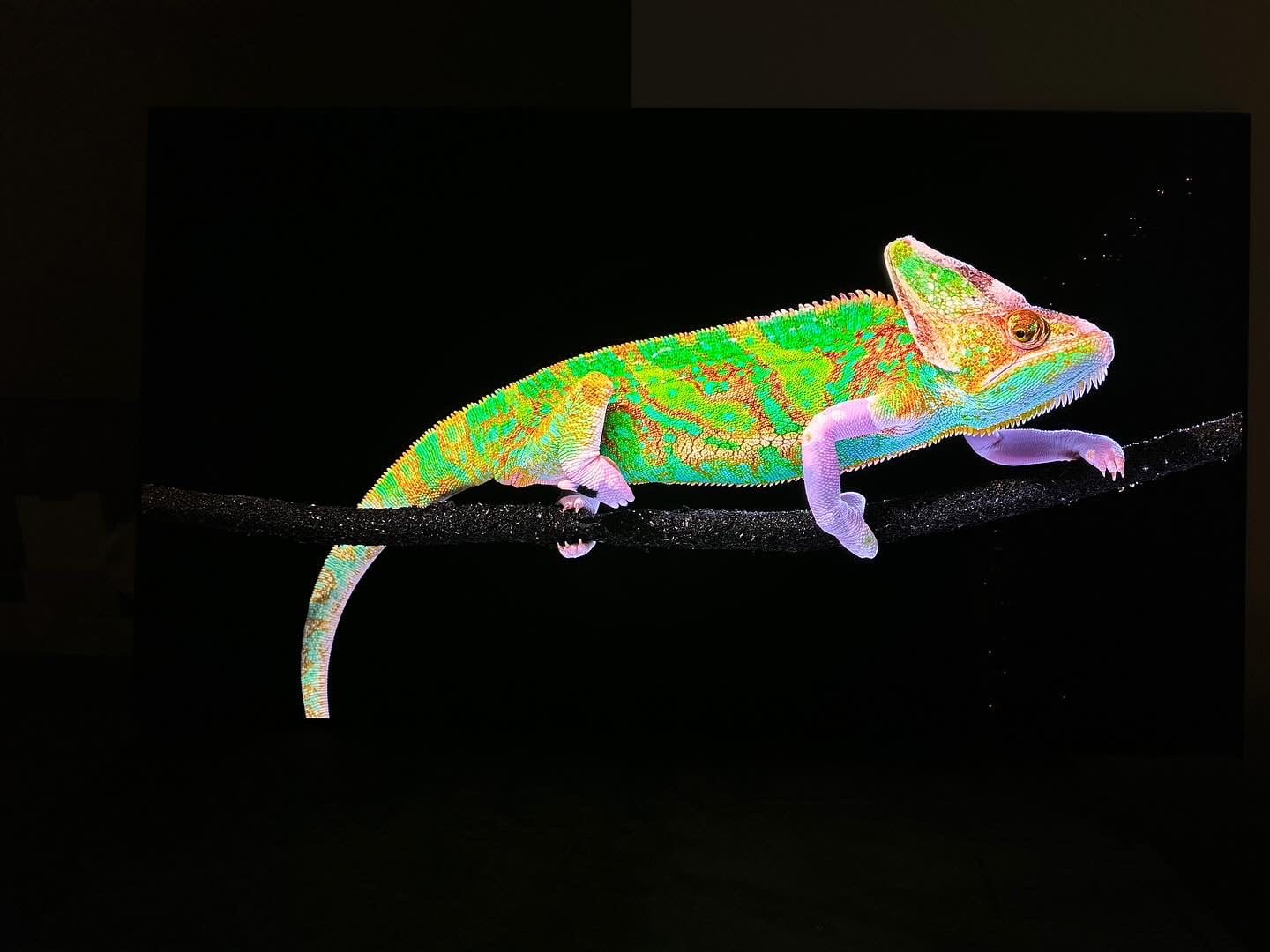
Evan Shepard/Gadget Review
For those eyeing the best Vizio TVs, our rankings are tailored to spotlight models that marry affordability with reliable performance. Leveraging extensive test data and our True Score system, we ensure you find the perfect Vizio option, matching your budget and viewing preferences seamlessly.
We gather this data to save you time and effort, plain and simple. We then analyze and summarize it to give you a clear picture of each product’s performance. With this information, we refine and organize our buying guides to guarantee that every Vizio TV recommended meets your specific needs and standards.
You may notice some of our graphs contain “Source: RTings”. This is to indicate that the data we’re showing off in a graph has come from a single source – because it’s the only source that actually tested the criteria and had data for it! Normally, our data is an average out of all of the various publications that test and provide data to give you a good idea of how a product is going to perform on average.
Which Criteria Matters for Testing Best Vizio TVs?
By focusing on these criteria (3 required, 3 nice to have), anyone can quickly and easily compare these TVs and how they’ll perform. This helps you make an informed decision and purchase the best Vizio TV.
| CRITERIA | RANGE | REQUIRED | DEFINITION |
|---|---|---|---|
| SDR Brightness | 300+ nits | Yes | Assess the luminance of your display when operating in Standard Dynamic Range (SDR) mode. |
| HDR Brightness | 1000+ nits | Yes | Determine the luminance of your display in High Dynamic Range (HDR) mode. |
| Color Gamut (DCI P3 xy) | >= 90% | Yes | Evaluate the extent to which a TV can reproduce a specified spectrum of colors. |
| EOTF | 0.018 | No (nice to have) | Standard that governs how a display interprets and renders brightness and color. |
| Response Time | <=10ms | No (nice to have) | Time required for a pixel to transition from one color to another and then return to its original color. |
| Contrast Ratio | >= 10,000 | No (nice to have) | The ratio between the brightest white and darkest black that the screen can display. |
Our Trusted Data Sources
(Publication category Score is 80%+)
We looked at 210+ TV reviewers and while 24 are trustworthy (60%+ Trust Rating), we only use data from the testers that are “very trusted” which means a Trust Rating above 70%. The three we have listed below are our most trusted for TVs, along with our own in-house TV expert.
- Evan Shepard – Gadget Review
- Matthew Lopes – RTings, MuckRack
- Will Greenwald – PCMag, MuckRack, Twitter
- David Katzmaier – CNET, MuckRack, Twitter
Interested in a comprehensive analysis of our data sources? We’ve got you covered. Below, you’ll find a detailed list of every TV review website we’ve identified, organized by their respective Trust Ratings from highest to lowest. But we didn’t stop there. We’ve meticulously reviewed each publication and verified the data by checking whether the authors have bio links to MuckRack or LinkedIn. We’re committed to not only checking the facts but ensuring their veracity.
Best Vizio TVs Test Data & Results
1. SDR & HDR Brightness TV Test Results
In well-lit rooms, the brightness level of your Vizio TV, quantified in nits, is key to a great viewing experience. A TV that doesn’t meet the brightness requirement will struggle against natural and artificial light, resulting in a dim, lackluster image. Essentially, nits measure how well your TV can stand up to light interference, with higher values ensuring a sharper, more vivid display.
For standard viewing on the best Vizio TV, you should look for at least 300 nits to strike the right balance between clarity and color quality in standard dynamic range (SDR) content. For high dynamic range (HDR) content, which offers richer colors and greater contrast, a minimum of 1000 nits is ideal to truly appreciate the enhanced visuals. These brightness levels are recommended to ensure your TV performs well in bright settings, allowing you to enjoy your shows and movies without any loss in detail or quality. Aim for these minimums: SDR Brightness >= 300 nits; HDR Brightness >= 1000 nits for the optimal experience.
Discover the top Vizio TVs, ranked from brightest to least, all exceeding our brightness criteria.
Brightness
SDR: 300+ nits
HDR: 1000+ nits
Acceptable range of performance
Definition: Maximum brightness in a specified pattern size window. Most commonly measured in a 10% or 100% white window.
Units of Measurement: nits (alternatively cd/m²)
Tools to Measure: TV, luminance meter
Why It’s Important:
Brightness helps counter ambient light so that details and colors don’t wash out and get lost.
SDR Brightness (in nits, higher is better)
HDR Brightness (in nits, higher is better)
2. Color Gamut (DCI P3 xy) TV Test Results
Color Gamut
>= 90%
Acceptable range of performance
Definition: The TV’s capability to display a spectrum of colors.
Units of Measurement: % (color space coverage in percent)
Tools to Measure: Colorimeter
Why It’s Important:
Inaccurate colors compromise the authenticity of the content.
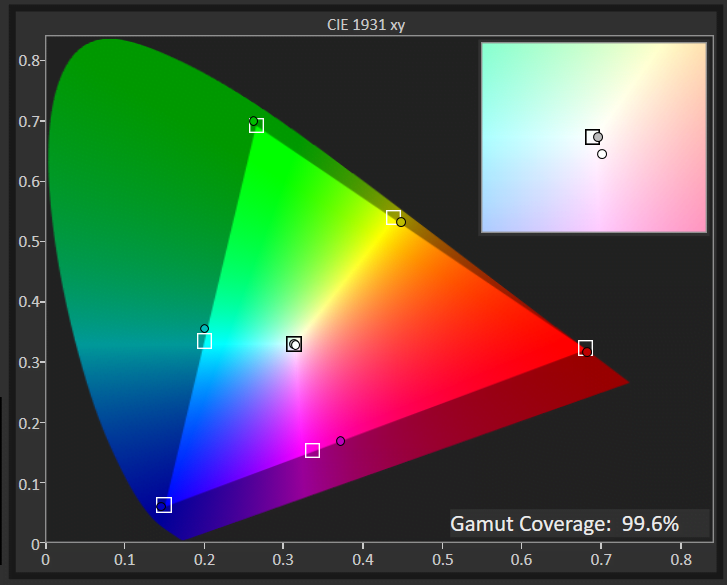
Color gamut defines the range of colors a Vizio TV can reproduce, directly affecting how vibrant and true-to-life the images look. A wide color gamut in a compact TV brings out richer, more vivid colors – from the lush greens of a garden to the bright colors of animated characters, enhancing your viewing experience to closely mimic real life.
This concept is technically measured against standards like the DCI P3 xy, a benchmark for high-quality visuals. A Vizio TV covering a higher percentage of this color space can display colors more accurately and vividly.
For those who prioritize vibrant and immersive visuals in a smaller package, aiming for a Vizio TV with a color gamut of 90% or higher on the DCI P3 xy scale is ideal. This ensures that the content you watch is as vibrant and lifelike as possible. Below is all the TVs on this guide sorted by best to least in Color Gamut.
Below are the top Vizio TVs, ordered by color gamut, all exceeding our testing criteria.
DCI P3 XY Color Gamut (as a %; high is better)
3. EOTF Test Results
The Electro-Optical Transfer Function (EOTF) plays a critical role in ensuring the content on your TV looks exactly as the creator intended. This technical feature adjusts your screen’s brightness levels, ensuring every scene, from the darkest shadows to the brightest highlights, is displayed with true-to-life accuracy.
In rooms flooded with light, a TV that nails EOTF calibration shines by preserving the intended contrast and detail in the picture despite the challenging conditions. It balances the brightness so that images remain vibrant and full of detail, unaffected by the glare of ambient light.
A TV that excels in managing EOTF offers an immersive and authentic viewing experience. It brings creators’ visions to life, accurately rendering every scene with the proper light and dark levels, no matter the lighting in your room. This means you get a consistent, realistic picture that captures the full spectrum of colors and contrasts, from the subtlest hues to the most intense explosions.
Below are all the Vizio TVs on our list, ordered by EOTF.
EOTF
< 0.018 (600 nit Δ)
Acceptable range of performance
Definition: How your TV interprets and renders the luminance data from content and translates it to be represented on screen. If EOTF/Gamma tracking is too low or too high, it will result in an over-brightened or over-darkened image from reference.
Units of Measurement: this test measures for the delta from the standard
Tools to Measure: Luminance colorimeter
Why It’s Important:
EOTF ensures that the game is displayed (color and HDR brightness) as the creator intended it
EOTF (source: rtings.com – 0 = no data exists; lower is better)
4. Response Time TV Test Results
Response Time
1ms-10ms
Acceptable range of performance
Definition: Speed at which a pixel transitions from one color to another
Units of Measurement: milliseconds (ms)
Tools to Measure: Screen, camera, test software
Why It’s Important:
A faster response time means less blur and thus more accuracy
A slow response time on a Vizio TV during fast-paced scenes is like trying to watch a thrilling movie with a foggy lens. Imagine settling in for an action-packed sequence, only to have the swift movements turn into a blur, robbing you of the crisp, clear detail you crave. This isn’t just a minor annoyance; it’s a major detriment to your viewing experience, leaving you with a picture marred by motion blur and visual artifacts.
So, what exactly is response time? It measures how quickly a pixel on your TV can change from one color to another. In the context of watching fast-moving content or enjoying dynamic scenes on a Vizio TV, a low response time is crucial. A response time of 15 ms or lower is good, but if you plan on gaming on this set, aim for a response time of 10 ms or lower. At these levels, your Vizio TV ensures smooth transitions and sharp visuals, making every scene come to life without any distracting blurs or delays. For gamers seeking the best TV for Xbox One X, a Vizio with a low response time not only enhances gameplay but also maximizes the console’s high-performance capabilities.
Below are the top Vizio TVs, ordered by response time.
Response Time (in milliseconds; lower is better)
5. Contrast Ratio Test Results
For Vizio TV enthusiasts, a solid contrast ratio is crucial for enjoying your favorite TV shows or movies, especially in darker settings. This feature directly impacts how lifelike and dynamic the picture appears on your screen, ensuring that dark scenes are displayed with clear, crisp blacks instead of murky grays and bright scenes retain their detail without appearing washed out.
Put simply, the contrast ratio is all about the range of luminance a TV can produce, from the deepest blacks to the brightest whites. It’s what brings depth to the image, enhancing the realism of every scene. Watching a movie in the dark, for example, the difference between a TV with a poor contrast ratio and one with a high ratio is stark: the former struggles, blending shadows into a flat gray, while the latter delivers true black, making night scenes more immersive and detailed.
Ideally, a contrast ratio of 10,000:1 is what you should aim for in a Vizio TV. This level of luminance variance ensures that you’re getting a picture quality that can handle the nuances of lighting in any scene, providing a viewing experience that’s both rich and engaging. Note: OLED TVs have infinite contrast ratio, indicated by “0.”
Below are the top Vizio TVs, ordered by contrast ratio.
Contrast Ratio
>=10,000:1
Acceptable range of performance
Definition: Difference between the darkest black and the brightest white a screen can display.
Units of Measurement: cd/m2
Tools to Measure: Luminance meter
Why It’s Important:
A higher contrast ratio delivers deeper blacks, enhancing content definition, especially in darker rooms.
Contrast Ratio (higher is better)
Best Vizio TVs: Mistakes To Avoid
- Ignoring Technical Specifications: Overlooking important technical specifications such as resolution, refresh rate, and connectivity options can lead to dissatisfaction with the TV’s performance or compatibility with other devices. Whether you are searching for an entry-level 4K TV like the one in our LG UN7300 review or one of the best 4K TVs, paying close attention to these specifications is essential to fully enjoying the ultra-high-definition experience. If you want something more “future-proof,” check out our guide on the best 8k TVs and consider learning about the differences between 4K vs 8K.
- Neglecting to Consider Room Size and Layout: Failing to consider the size and layout of the room where the TV will be placed can result in choosing a screen size that’s either too small or too large for comfortable viewing.
- Overlooking Display Quality: Not paying attention to factors like color accuracy, contrast ratio, and HDR capabilities can lead to a subpar viewing experience, especially when watching high-definition content. While the best Vizio models often boast impressive display quality, make sure to compare features across different brands, such as the best TCL TVs, to ensure the best picture quality.
- Disregarding User Reviews and Ratings: Ignoring feedback from other consumers regarding reliability, customer service experiences, and overall satisfaction with the product can result in choosing a Vizio TV that may not meet your expectations in the long run.
The Best Vizio TVs Tests Compared
Product |
True Score
|
SDR Brightness
|
HDR Barightness
|
Color Gamut
|
EOTF
|
Response Time
|
Contrast Ratio
| |
|---|---|---|---|---|---|---|---|---|
82 |
|
|
|
|
|
| $298.00 $350 $52 | |
79 |
|
|
|
|
|
| $106.00 $118 $12 | |
79 |
|
|
|
|
|
| $426.99 $630 $203 | |
79 |
|
|
|
|
|
| $748.00 $1,267 $519 |

